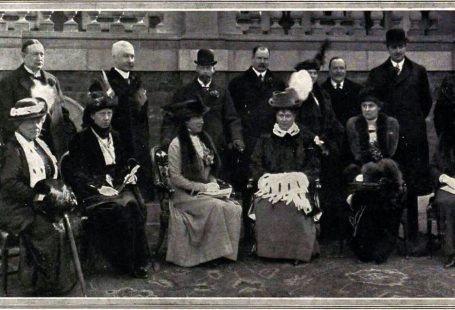 Denise Bates, historian and author of Breach of Promise to Marry: A History of How Jilted Brides Settled Scores, explains why local newspapers are often more useful for historical research than national newspapers.
Denise Bates, historian and author of Breach of Promise to Marry: A History of How Jilted Brides Settled Scores, explains why local newspapers are often more useful for historical research than national newspapers.
**************
Breach of promise was a legal claim. It allowed a man or woman to demand financial compensation from their ex-fiancée or ex-fiancé if they broke their engagement to marry.
Newspapers are the best source of information about breach of promise cases, but there is a considerable difference between the reports in local and in national papers.
Competing stories and editorial policies meant that national newspapers could sometimes be unduly selective about what they reported. More rounded accounts can often be found in local newspapers.
The Times and breach of promise
With plenty of material jostling for coverage, national newspapers tended to focus on the high profile cases which readers would expect to read about. When they covered mundane ones it was sometimes to reinforce their editorial stance.
By the 1860s, The Times disliked breach of promise and seems to have included certain cases in order to demonstrate its view that the claims had little merit.
On a few occasions, The Times pointedly adopted the moral high ground by informing its readers that it was not reporting detail because it would have no interest to its readers. One such instance was the failed teenage romance between publican’s daughter Elizabeth Stacey and jockey Charles Bennett in 1863.
The Berkshire Chronicle, however, provided their readers with a full report of the hearing. A century and a half later, this detail adds to our understanding of working-class courtships.
Berkshire Chronicle – Saturday 20 June 1863
Image © THE BRITISH LIBRARY BOARD. ALL RIGHTS RESERVED.
The Sheffield Independent reveals essential extra detail
Reports of breach of promise hearings in local papers often contained much richer detail than the national ones, revealing the plaintiff and defendant as people and putting their court battle into context.
In 1870, The Times left key questions unanswered when it reported Julia Barnett’s fraudulent claim against Adolphus Abrahams. The article suggested that there was more to the case than a deceitful woman attempting to foist paternity of her illegitimate son onto her ex-fiance.
More detailed accounts of the trial were printed in local newspapers, such as the Sheffield Independent. These reveal that Julia was indecently assaulted in a railway carriage by an employee of the Metropolitan Railway on her way home from work. Her claim raised questions that went far beyond breach of promise law.
Sheffield Independent – Saturday 30 April 1870
Image © THE BRITISH LIBRARY BOARD. ALL RIGHTS RESERVED.
Comparing The Times and the Cheshire Observer
Sometimes the only mention of a breach of promise case in a national newspaper was that it had bankrupted one of the parties. The Times reported that George Parnell applied for bankruptcy in 1883 after Harriet Stedman won her claim for damages.
A report in the Cheshire Observer revealed some unexpected aspects. The claim arose after Parnell told Harriet and her mother to ‘clear out’ of his house. He dumped the 83-year-old and her belongings in the street while Harriet was consulting a solicitor.
As no unnecessary violence had been used in evicting the old lady, Mrs Stedman was not able to sue for compensation. In disallowing her claim, the judge made his contempt for Parnell very clear to the jury.
The jury then went on to award Harriet £500 for breach of promise. This was an exceptionally large award at that time, suggesting Parnell was also being punished for his unchivalrous conduct towards an old lady.
Cheshire Observer – Saturday 10 March 1883
Image © THE BRITISH LIBRARY BOARD. ALL RIGHTS RESERVED.
**************
Visit Denise’s website to order a copy of Breach of Promise to Marry: A History of How Jilted Brides Settled Scores.






